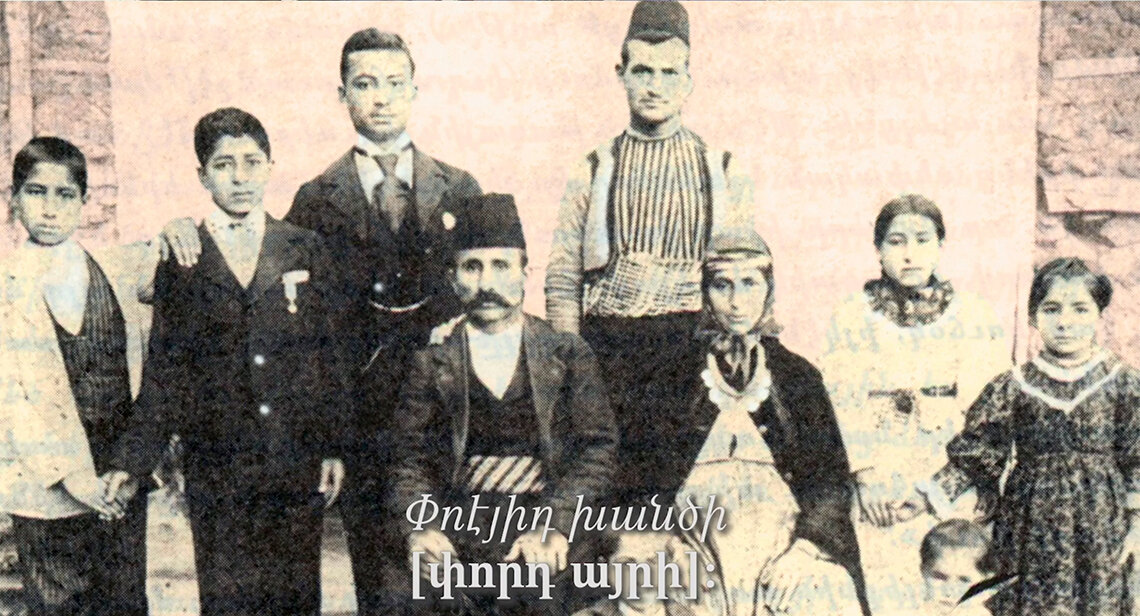Hadjin - Dialect
Hedjentsik tum Agho en - Local Dialect and Customs
Concept and editing by Silvina Der Meguerditchian.
The film is about 11 minutes long, and it is dedicated to the dialect and customs of Hadjin Armenians. It features material collected from throughout the world, including testimonies by people now living in Argentina and Lebanon, as well as photographs sent to use from Lebanon, the United States, Argentina, and France. It also features music obtained from New Jersey, Buenos Aires, and Berlin.
The common thread is Hadjin – its dialect, its traditions, and local customs.
Film in Hadjin Dialect – Buenos Aires
This is a truly unique film. A group of Hadjin Armenians, affiliated with the Hadjin House club of Buenos Aires, came together and produced a film that presented the Hadjin dialect to its viewers. The film was released in 2005, on the occasion of the 50th anniversary of Hadjin House.
Neither the producers nor the actors in the film are professionals. But that is of secondary importance. Regardless of its technical quality, the film is clearly a critical initiative by second-generation Hadjin Armenians, born in Argentina, to preserve their native tongue. The film also demonstrates that the dialect of Hadjin was given a second life by the second generation of Hadjin Armenians in Buenos Aires, as the actors proficient speakers.
The film is presented with English and Spanish subtitles.
An overview of the film: A Hadjin Armenian couple wishes their son to marry. The mother and father seek a fitting bride, and eventually decide to visit one girl’s family to ask for her hand in the traditional Hadjin style.
The film was directed by Jorge Balassanian. It features Juan Carlos Balassanian, Aracy Tchokaklian (nee Janikian), Siruhi Piranian (nee Belorian), Vartivar Tursarkisian, and Silvia Apochian (nee Ouroudjian).
Interviews with Hadjin Armenians – Lebanon
This series of interviews was conducted on Houshamadyan’s initiative in January 2020, in Lebanon. Our interviewees were children of Armenians who had left Hadjin, born in Lebanon. But the stories, traditions, and customs which their parents had bequeathed to them remained vivid in their memories.
Our interlocutors also lived in an atmosphere redolent with Hadjin traditions. Not only their parents and relations, but also their neighbors and friends were Hadjin Armenians. Under such favorable conditions, many Hadjin traditions were preserved in Lebanon, including its dialect. Second-generation Hadjin Armenians had learned this dialect from their parents, and although they didn’t speak it as proficiently as their elders, they made sure that their native tongue did not die off.
Interviews on behalf of Houshamadyan were conducted by Nora Sarafian-Tashjian. The interviews were filmed by Etienne Seokunian.
Makrouhi Tatoulian-Khachadourian |Khalil Bedewi neighborhood, Lebanon, interviewed in the film
Zabel Sarafian-Moutafian, Zalka neighborhood, Lebanon, interviewed in the film
Antranig Dakesian, Amanos neighborhood, Lebanon, interviewed in the film
Video | Houshamadyan workshop focusing on the oral history of Hadjin | Buenos Aires
This video was filmed in 2017 at the Hadjin House club, in Buenos Aires, during a workshop hosted by Houshamadyan. During the workshop, conducted by our colleague Silvina Der Meguerditchian, descendants of Hadjin Armenians shared memories of their parents or grandparents, anecdotes from their lives, and their families’ traditions and customs. The setting for many of their stories was Hadjin, while others had taken place in Argentina, where many Hadjin Armenians had settled down, and where they had preserved many of their traditions. Some of Silvina’s interlocutors speak in the Hadjin dialect, which has probably been preserved in Buenos Aires more than anywhere else in the world. The workshop was conducted in Spanish.
